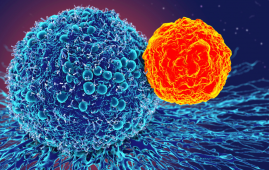

A new study of over 10,000 participants’ data found that those who were physically active had higher pain tolerance than those who were sedentary, and those with a higher degree of exercise had higher pain tolerance. On May 24, 2023, Anders rnes of the University Hospital of North Norway, Troms, and colleagues will publish their findings in the open-access journal PLOS ONE. Prior research has showed that engaging in more physical activity may help alleviate or prevent chronic pain by increasing pain tolerance. However, most studies on this subject have been tiny or limited to small groups of people.
To better elucidate the association between physical activity and pain tolerance, rnes and colleagues reviewed data from 10,732 Norwegian people who took part in the Troms research, a major population survey research conducted on a regular basis in Norway. The researchers analyzed data from two Troms Study rounds, one from 2007 to 2008 and the second from 2015 to 2016. Participants’ self-reported levels of physical activity and pain tolerance were assessed in a test that involved submerging their hand in cold water.
Participants who reported being physically active in either round of the Troms Study had higher pain tolerance than those who claimed a sedentary lifestyle in both rounds, according to statistical analysis of the data. Participants with higher total activity levels had higher pain tolerance, and those with higher activity levels in 2015/2016 compared to 2007/2008 had a higher overall degree of pain tolerance.
There was no statistically significant association between activity level and changes in pain tolerance across the two rounds of the trial, according to the analysis. Nonetheless, data implies that staying physically active, becoming active, or increasing activity is associated with increased pain tolerance.
Based on their findings, the researchers propose that increasing physical activity could be a viable method for reducing or eliminating chronic pain. Future research could assist confirm whether or whether there is a cause-and-effect relationship between activity and pain tolerance, as well as assess possible therapeutic uses.
The authors add, “Becoming or staying physically active over time can benefit your pain tolerance. Whatever you do, the most important thing is that you do something.”
more recommended stories
 T-bet and the Genetic Control of Memory B Cell Differentiation
T-bet and the Genetic Control of Memory B Cell DifferentiationIn a major advancement in immunology,.
 Ultra-Processed Foods May Harm Brain Health in Children
Ultra-Processed Foods May Harm Brain Health in ChildrenUltra-Processed Foods Linked to Cognitive and.
 Parkinson’s Disease Care Advances with Weekly Injectable
Parkinson’s Disease Care Advances with Weekly InjectableA new weekly injectable formulation of.
 Brain’s Biological Age Emerges as Key Health Risk Indicator
Brain’s Biological Age Emerges as Key Health Risk IndicatorClinical Significance of Brain Age in.
 Children’s Health in the United States is Declining!
Children’s Health in the United States is Declining!Summary: A comprehensive analysis of U.S..
 Autoimmune Disorders: ADA2 as a Therapeutic Target
Autoimmune Disorders: ADA2 as a Therapeutic TargetAdenosine deaminase 2 (ADA2) has emerged.
 Is Prediabetes Reversible through Exercise?
Is Prediabetes Reversible through Exercise?150 Minutes of Weekly Exercise May.
 New Blood Cancer Model Unveils Drug Resistance
New Blood Cancer Model Unveils Drug ResistanceNew Lab Model Reveals Gene Mutation.
 Healthy Habits Slash Diverticulitis Risk in Half: Clinical Insights
Healthy Habits Slash Diverticulitis Risk in Half: Clinical InsightsHealthy Habits Slash Diverticulitis Risk in.
 Caffeine and SIDS: A New Prevention Theory
Caffeine and SIDS: A New Prevention TheoryFor the first time in decades,.

Leave a Comment